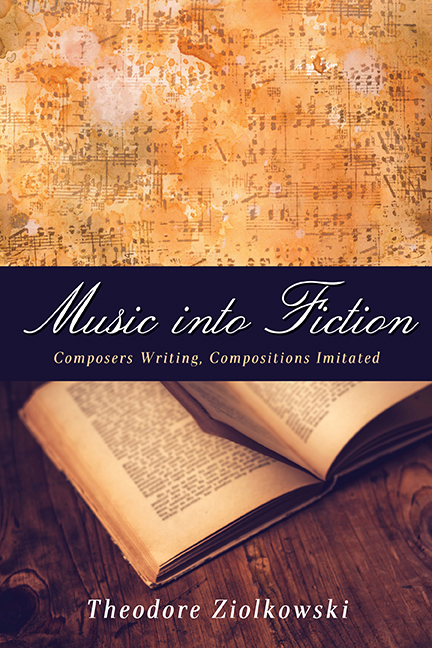First Movement: Composers Writing
Published online by Cambridge University Press: 09 May 2017
Summary
Double talents in literature and art are not uncommon. Twentieth-century Germany has witnessed such noted writers as Hermann Hesse, Friedrich Dürrenmatt, Günter Grass, Oskar Kokoschka, Ernst Barlach, and Wolfgang Hildesheimer, who were gifted artists. Not only have their paintings and drawings illustrated their own literary works—for example, Hesse's Piktors Verwandlungen (Pictor's Metamorphoses, 1925) or Dürrenmatt's Minotaurus (1986)—but their graphic works have been widely published and exhibited. Many other artists, such as Pablo Picasso, wrote occasional verse. If we look back to the nineteenth century, such major figures as Johann Wolfgang Goethe, William Blake, and Victor Hugo immediately spring to mind. One catalogue lists well over one hundred writer-artists in eighteenth-and nineteenth-century Germany alone. Other studies have focused on these “sister arts” mainly in England. Ekphrasis—descriptions of works from the visual arts—has been a common technique in literature from Homer's description of Achilles's shield to Auden's realization of Brueghel's Landscape with the Fall of Icarus in his poem “Musée des Beaux Arts” (1938). The same term is sometimes also used to designate program music, such as Modest Mussorgsky's Pictures at an Exhibition and Sergei Rachmaninoff 's Isle of the Dead (1908), which was inspired by Arnold Böcklin's painting of that title (Die Toteninsel, 1880).
The relationship of literature and art, commonly known in the seventeenth and eighteenth centuries as the “sister arts,” has constituted a familiar topic of aesthetic discussion at least since Horace's renowned declaration ut pictura poesis (in his Ars Poetica, l.361). Gotthold Ephraim Lessing, in his magisterial work Laokoon, oder Über die Grenzen der Malerei und Poesie (Laocoön; or, On the Boundaries of Painting and Poetry, 1766), disputed the analogy, contending that visible objects in space (“Gegenstände”) are the proper subject for painting, while poetry concerns itself with actions in time (“Handlung”). But the many examples of artist-writers suggest that there must be some reason for the mutual appeal. Joseph Frank, continuing Lessing's speculations but without discussing writers who actually paint, argued in 1945 that modern literature was becoming increasingly spatial in form (and, by implication, not temporal-musical).
- Type
- Chapter
- Information
- Music into FictionComposers Writing, Compositions Imitated, pp. 7 - 10Publisher: Boydell & BrewerPrint publication year: 2017



